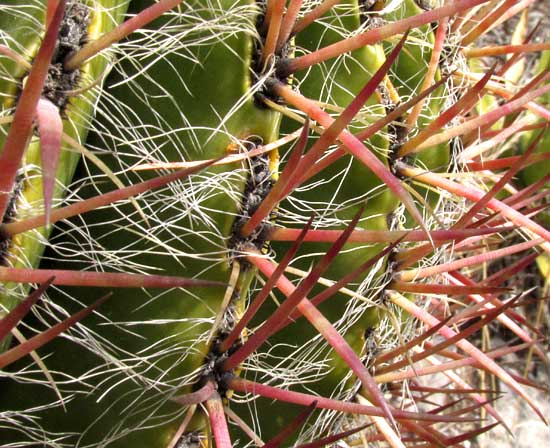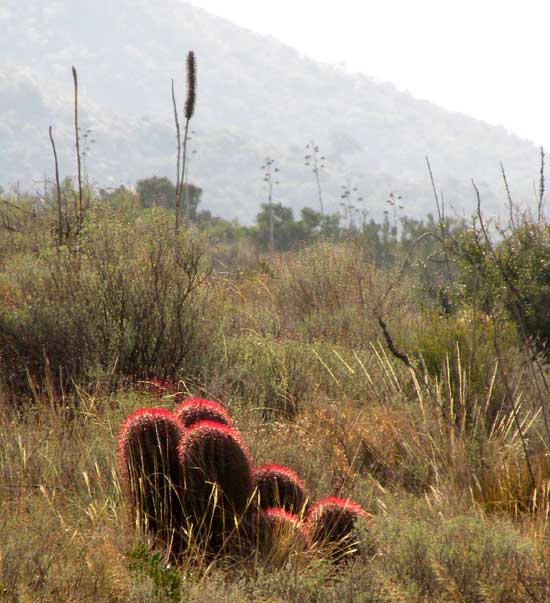Excerpts from Jim Conrad's
Naturalist Newsletter
from the May 10, 2018 Newsletter with notes from a camping trip in Coahuila state, MÉXICO
FIRE BARREL CACTUS
During last month's camping trip in the highlands east of Saltillo, Coahuila, on April 5th I started out hiking on a valley floor, and climbed a small mountain that was grassy and scrubby at its base, but forested on top. Toward the top, at ±7000 feet in elevation (2100m), where trees were just starting to appear, I found the handsome cactus shown below:

In the above picture, my sunhat is 16½ inches across (40cm). The cactus is about 2.2 hats high, so it's a little over three feet tall (88cm). It wasn't until I was back in the Yucatan with the above picture on my laptop that I enlarged a view of the cactus's top and realized we had a second species. The evidence is shown below:

Those white, hairlike items issuing from spine cluster bases aren't present on Giant Barrel Cactuses. Also, the spines themselves are a little different.
In the end, it was those reddish spines at the cactus's top that enabled me to identify it in Alfredo Flores's Guía de Cactáceas del Estado de Coahuila as FEROCACTUS STAINESII ssp PILOSUS*.
Being such an impressive species, it's known by several English names, including Mexican Lime Cactus, Mexican Fire Barrel Cactus, and just plain Fire Barrel. It's endemic just to the semi-desert, usually limestone mountains of northeastern and north-central Mexico, usually between 1600 and 2000 meters in elevation. Being so handsome, it suffers greatly from collectors, plus it suffers from local people who eat the flower buds. Habitat destruction by agriculture and ranching is its main problem, however. Fire Barrel Cactus can grow up to 10ft tall (3m).
Two Fire Barrel subspecies are recognized, our pilosus with wispy, white, wiry items around the spine base, and subspecies pringlei without the white, wiry items.
Below, you can see where the Fire Barrel Cactus got its name in a picture taken when early morning sunlight backlighted its mantle of red spines, on a mountain slope right where semi-desert bushland started transistioning to scrubby forest:
